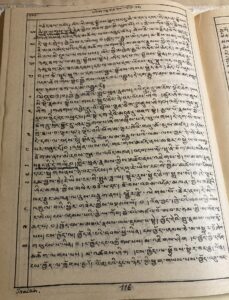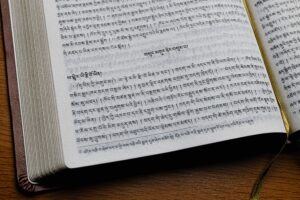History
About NTB
(originally written in Tibetan)
In the Holy Bible are clearly recorded the origins of the universe and humankind and the like, as well as the beginning of sin and hardship and the way of salvation, the end salvation of a person’s life and long-lasting happiness.
 The ongoing relationship of the Holy Bible and the Tibetan people is very long. The initial translation of the New Testament into literary Tibetan was begun in Lahul, India by the German Jaschke around 1857 and drafts of the four gospels and the Apostle Paul’s Epistles were prepared in the 1860s. Then in 1874 the former Lama Zodpa Gyaltsan (bzod pa rgyal mtshan) and the German Redslob together began the translation of the Old Testament text into literary Tibetan in Lahul.
The ongoing relationship of the Holy Bible and the Tibetan people is very long. The initial translation of the New Testament into literary Tibetan was begun in Lahul, India by the German Jaschke around 1857 and drafts of the four gospels and the Apostle Paul’s Epistles were prepared in the 1860s. Then in 1874 the former Lama Zodpa Gyaltsan (bzod pa rgyal mtshan) and the German Redslob together began the translation of the Old Testament text into literary Tibetan in Lahul.
In 1883 Redslob completed the translation of Hebrews and Revelation. In 1885 the first Tibetan New Testament was completed and printed in Berlin. Afterwards in 1888 the former Lama Gergan Sonam Wangyal (dge rgan bsod nams dbang rgyal) joined in the translation of the text and from 1919 onward, the son of Gergan Sonam Wangyal, Tseden (tshe brtan), who is also called Yoseb Gergan, continued the work of his father and joined in the translation of the Holy Bible and together with the German scholar A.H.Francke translated the Old Testament into literary Tibetan.
Babu Tharchin (mthar phyin) and MacDonald together reviewed their drafts of the Old Testament and in the end in 1936 the full Holy Bible in literary Tibetan was completed and in 1948 it was printed in Lahore Pakistan. That version was hand-written on special sheets for printing and led to the publication of the complete Holy Bible – the first printing of the Tibetan Old and New Testaments.
 Now a new translation for modern Tibetan readers has been produced and is called “The New Tibetan Bible.” The complete Bible, both Old and New Testaments have been printed in one volume. This New Tibetan Bible has a few distinct qualities:
Now a new translation for modern Tibetan readers has been produced and is called “The New Tibetan Bible.” The complete Bible, both Old and New Testaments have been printed in one volume. This New Tibetan Bible has a few distinct qualities:
1. This text has been translated into literary Tibetan by a team of Tibetan translators who analyzed in detail many English and Chinese versions;
2. This text has been checked against and edited to the Hebrew and Greek manuscripts; and
3. A few nice renderings of previous versions have been appropriately used.
By this means our final prayer regarding this translated text in literary Tibetan is that Tibetans through the reading of God’s Word will receive salvation and hope for their souls, and not only this, that they will be able to have an eternal relationship with God.
Finally, with the hope that all Tibetans both those at home and far away will receive God’s endless blessing,
Offered on this good day and month from the editorial unit of the New Tibetan Bible.
Year 2024, Western Month 1, day 1
